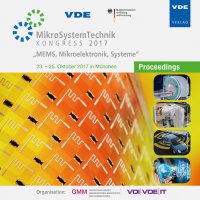Digital Twins at the Crossroad of Production, Product and Technology
Conference: MikroSystemTechnik 2017 - Kongress
10/23/2017 - 10/25/2017 at München, Deutschland
Proceedings: MikroSystemTechnik 2017
Pages: 4Language: englishTyp: PDF
Personal VDE Members are entitled to a 10% discount on this title
Authors:
Funk, Klaus (Zentrum Digitalisierung. Bayern, Deutschland)
Reinhart, Gunther (TU München, Institut für Werkzeugmaschinen und Betriebswissenschaften, München, Deutschland)
Abstract:
Germany’s Industrie 4.0 in its early days and its narrow sense is the domain of production mainly and requires the process and data integration along the entire value chain. The aim is to get a lot more flexibility and closed loop operation. An even more consequent approach takes the horizontally process and data integration into account. It forms a value network across corresponding value chains utilizing all kinds of internal and external input variations. Industry 4.0’s way of thinking has two important goals. An internal one optimizing the company’s own value stream and an external one, providing the company’s customers with products that gives them a competitive advantage. Up to Industry 3.0, fixed customer specifications covering at the same time 80% of other customers‘ requirements whether needed or not, fixed material specification covering 80% of other applications and standard equipment built identically for most of the competitors are fed into the own production with fixed processing steps and sequence, booked with fixed std minutes for each production step. Temporary incidences of the ideal production, caused by non-availability of parts, unintentional swap, the superposition of tolerances or the wear out of manufacturing tooling are not taken into account, nor gets manual rework accounted. A careful and thorough engineering so far tackles the most severe foreseeable incidences, but fails in small batch size highly variable production. If incidences are not analysed for its impact on the result, resource and delivery planning often gets corrupted ending up in useless and costly activities or even scrap. The same applies on impacts on the product performance by non-ideal production or material. Vice versa, products with non-standard and individual specification and non-standard processes still can lead to perfect products matching customer’s needs, if the impact of the deviation is transparent and proven to yield good.


